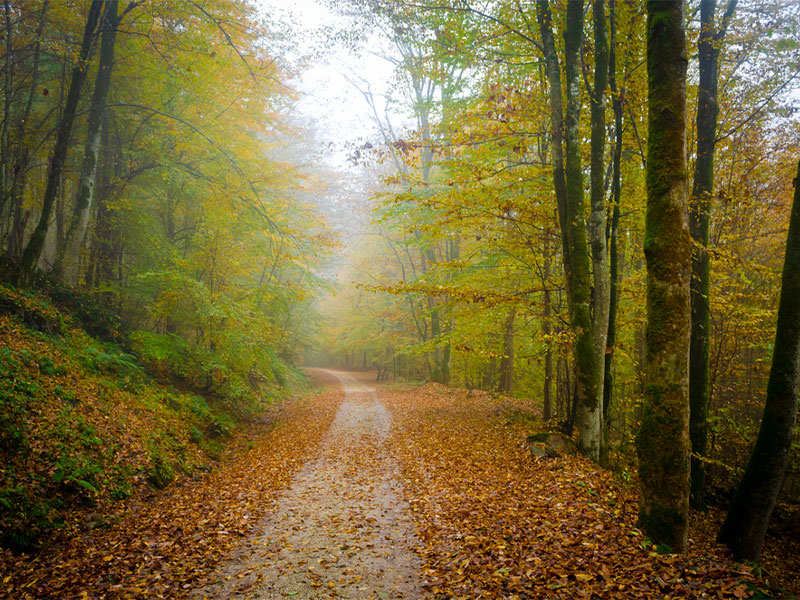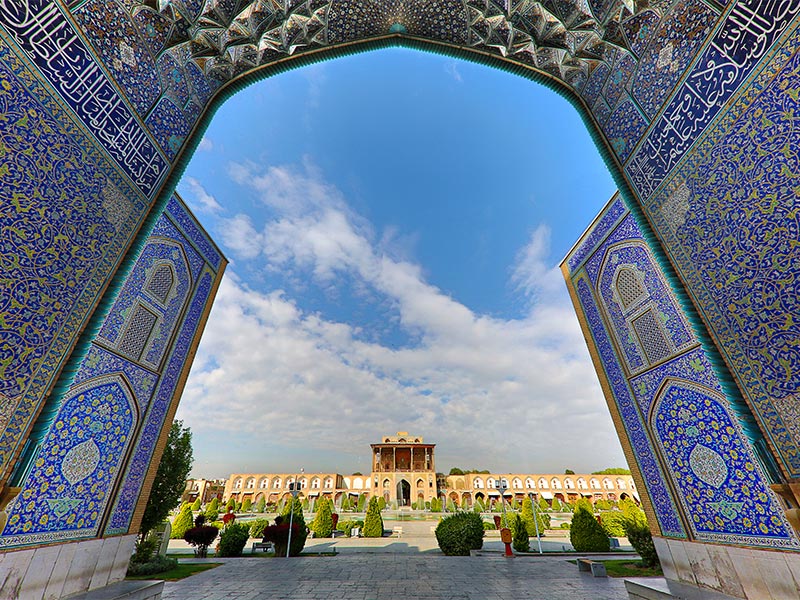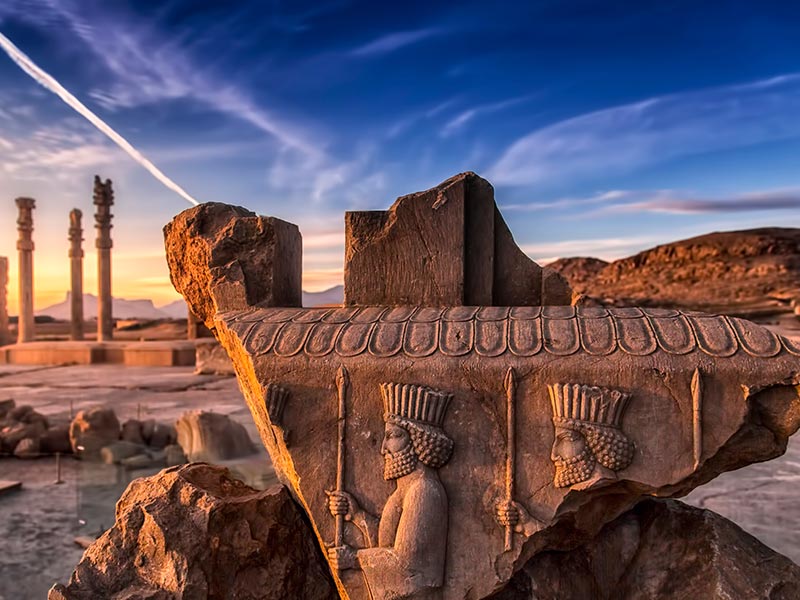In this guide, we will be focusing on the present UNESCO World Heritage Sites in Iran with the year of their registration and a brief history. For starters let’s have a quick look at the list of these sites.
List of UNESCO World Heritage Sites in Iran
| Name | Province in Iran | Year of registration |
| TChogha Zanbil | Khuzestan | 1979 |
| Persepolis | Fars | 1979 |
| Naqsh-e Jahan Square | Isfahan | 1979 |
| Takht-e Solyman | West Azerbaijan | 2003 |
| Arg-e Bam | Kerman | 2004 |
| Pasargad | Fars | 2004 |
| Soltaniyeh Dome | Zanjan | 2005 |
| Stone inscriptions of Bisotun | Kermanshah | 2006 |
| Armenian Monastic Ensembles | East and West Azerbaijan | 2008 |
| Shushtar Historical Hydraulic System | Khuzestan | 2009 |
| Tabriz Historic Bazaar Complex | East Azerbaijan | 2010 |
| Sheikh Safi al-din Khanegah | Ardabil | 2010 |
| The Persian Garden | Several provinces | 2011 |
| Masjed-e Jame of Isfahan | Isfahan | 2012 |
| Gonbad-e Qabus | Golestan | 2012 |
| Golestan Palace | Tehran | 2013 |
| Shahr-i Sokhta | Sistan and Baluchistan | 2014 |
| Cultural Landscape of Meymand | Kerman | 2015 |
| Susa | Khuzestan | 2015 |
| The Persian Qanat | several provinces | 2016 |
| Lut desert | Shared by several provinces | 2016 |
| Historica city of Yazd | Yazd | 2017 |
| Sassanid Archaeological Landscape of Fars Region | Fars | 2018 |
| Hyrcanian forests | Several provinces | 2019 |
| Trans-Iranian Railway | Several provinces | 2021 |
| Cultural landscape of Uramanat | Kurdistan and Kermanshah | 2021 |
Book Iran Air flights from London to Tehran and Tehran to London with Eligasht UK:
By registering outstanding historical and natural sites from different parts of the world, the UNESCO organization has created a chain of connections between different countries and has made the preservation and maintenance of the historical and natural treasures of the world an obligation for states. People all over the world, regardless of race, religion, and ethnicity, must work to preserve the culture and civilization of the world for future generations. The multiple UNESCO World Heritage sites in Iran show the antiquity of this ancient land. A series of historical, natural, and cultural treasures that stand out in the UNESCO World Heritage list.
Iran’s First UNESCO World Heritage Site
The first registered site of Iran in UNESCO World Heritage is the ancient shrine of TChogha Zanbil in the ancient city of Susa, which dates back to around 1250 BC. This historical site was registered in the UNESCO World Heritage list in 1979. The registration files of TChogha Zanbil, Takht-e Jamshid, and Naqsh-e Jahan Square of Isfahan in the UNESCO heritage were opened at the same time; But TChogha Zanbil was the first historical and cultural site of Iran that was recognized by the UNESCO’s World Heritage list.
Iran’s First Natural Attraction Registered in UNESCO
Lut desert is the first Iranian natural site that was registered in the UNESCO World Heritage list. The Lut plain or desert is considered to be one of the most beautiful tourist spots in Iran with amazing views of the heart of the desert.
Iran’s First Industrial Heritage Site Registered in UNESCO
Iran’s National Railway was registered in this list of World Heritage during the 44th UNESCO World Summit as the first industrial heritage of the country. The biggest feature of this extensive railway line is the advanced technique and high quality of the national railway construction with limited facilities nearly a century ago.
Reza Shah Pahlavi laid the foundations for the construction of Iran’s national railway, and American and German engineers were responsible for the mapping and design of this extensive railway line.
Although the Trans- Iranian railway was specifically designed for the benefit of international governments, especially England, after the end of World War II, over time, it led to the expansion of commerce in the country.
The national railway is about 1400 kilometers long and along its route from the north to the southwest of Iran, it passes through green and pristine forests, impassable mountains, and prominent historical and natural attractions. The Trans- Iranian railway starts from the port of Gaz in the south of the Caspian Sea and passing through cities such as Qaimshahr, Gaduk, Firouzkoh, Garmsar, Tehran, Arak, Durud, Shahbazan, Andimshek and Ahvaz it reaches the port of Imam Khomeini in the southwest of Iran along the coast of the Persian Gulf.
UNESCO World Heritage Site in Iran – Natural Sites
The country of Iran, with its varied climate, covers a diverse natural area. In the following, we will be focusing on Iran’s natural sites registered as UNESCO World Heritage.
Lut Desert
- The provinces of Sistan and Baluchistan, South Khorasan, and Kerman
- Registration year: 2016
Dasht-e Lut or Lut Desert is one of the most prominent natural areas in Iran and the world. This vast plain is registered as the Lut Desert on the UNESCO World Heritage list. Lut desert is the 25th largest desert in the world and includes parts of Sistan and Baluchistan, South Khorasan, and Kerman provinces. Dasht-e Lut was registered in the UNESCO World Heritage list in 2016.
In the vast expanse of the Lut plain, traces of a 4,000-year-old civilization have been discovered, and for this reason, many archaeologists from all over the world have traveled to this region of Iran to visit the desert in recent years. The north-south length of Lut Plain is about 900 km, and the east-west width of this vast desert reaches 300 km.
Among the most beautiful natural attractions of the Lut Desert, we can mention ‘Khor Desert’, ‘Namak Khor Lake’, and ‘Shahdad Desert’. Volcanic cones, Klots in Shahdad, sand dunes, and Nebkas are other beautiful sights that the Lut Desert has to offer.
Hyrcanian Forests
- North Khorasan, Golestan, Mazandaran and Gilan provinces
- Registration year: 2019
Hyrcanian forests on the edge of the Caspian Sea are among the most important regions of the biosphere in Iran. Of course, a small part of this area is located in Azerbaijan as well.
Hyrcanian forests are a valuable natural resource and are spread over an area of 800 km with a variable width between 20 and 70 km. The diversity of fauna and flora present in the area proves the importance of Hyrcanian forests.
A significant part of Hyrcanian forests are located in Mazandaran province and Golestan and Gilan provinces come next in ranks. The forests of Elimistan Amol, Bolai Sari forest, Vaz Noor forest, Kajur Nowshahr, and Dakheh Daran of Tonekabon are among the significant parts of the Hyrcanian forests in Iran.

UNESCO World Heritage Site in Iran – Cultural Sites
A significant part of Iran’s registered sites in UNESCO World Heritage is dedicated to cultural places. The oldest civilizations in the world lived in the Iranian plateau in the past, and the country of Iran today forms a significant part of this plateau, and for this reason, significant historical and cultural sites of Iran have been recognized as UNESCO’s World Heritage sites. The number of Iran’s cultural works registered in UNESCO reaches 23, and considering Iran’s vast capacities in this field, it is expected to increase in the coming years. In this section of the guide, we will be focusing on Iranian cultural World Heritage sites registered by UNESCO.
Chogha Zanbil
- Khuzestan province
- Registration year: 1979
TChogha Zanbil is considered to be the first place of worship in Iran and in 1979 it was registered as the first historical and cultural site of Iran on the UNESCO World Heritage list. Archaeologists and orientalists know the value of this historical monument and TChogha Zanbil Temple has a distinct place among history enthusiasts all over the world.
TChogha Zanbil is located near the ancient city of Duravantash, which today includes the area near Susa in Khuzestan. The building of TChogha Zanbil dates back to 1250 years BC. The original building was more than 50 meters high and had five floors. There are various temples in the area inside TChogha Zanbil. The foundation of the TChagha Zanbil complex is a square with an area of more than 400 square meters.
The discovery of a brick inscription from the ancient site of TChogha Zanbil led to the discovery of the ancient city of Duravantash. Today, archaeological excavations continue in the area, and many archaeologists from all over the world visit Tchoga Zanbil on a regular basis.
Persepolis (Takht-e Jamshid)
- Fars province
- Registration year: 1979
Persepolis, near Marvdasht, Fars province, is a great symbol of the glory of Aryan culture and civilization during the Achaemenid dynasty. In the past, Persepolis was a magnificent and prosperous city where the seat of the Achaemenid kings was located. The construction of Persepolis palaces began more than 500 years before Christ and continued until 150 years after that. After Alexander the Great attacked Iran, the palaces of Persepolis were set on fire by the king of Greece, and many parts of the buildings were destroyed; But even today, the remaining ruins of Persepolis show the greatness and glory of ancient Iran.
The palaces of Darius, Xerxes, and Ardeshir of Achaemenids, at the foot of the mountain and above the plain in Fars, attract many tourists from all over the world to Iran every year. Takht-e Jamshid, which the Greeks referred to as Persepolis, is one of the most important cultural and historical sites of Iran registered in the UNESCO World Heritage list. Huge treasures of ancient Iranian inscriptions with Elamite cuneiform at the site of Persepolis have provided historians with precious historical information.
Among the buildings in the city of Persepolis, we can mention Apadana Palace, Thatcher Palace, Hadish Palace, Queen’s Palace, Royal Treasury Building, Palace of Hundred Pillars Palace, and Shura Palace. These buildings are among the most beautiful examples of ancient Iranian architecture.
Naghsh-e-Jahan Square
- Isfahan province
- Registration year: 1979
Naqsh-e Jahan Square of Isfahan is also known as Imam Square, and as one of the main centers of Iran during the era of the past kings, it has many outstanding historical buildings to offer. In the four corners of Naqsh-e Jahan Square in Isfahan, there are buildings from the Safavid period. These buildings remind the visitors of the glory and authority of Iran in the past.
Naqsh-e Jahan Square in Isfahan is one of the first buildings registered in the UNESCO World Heritage list. The famous buildings of Naqsh-e Jahan Square in Isfahan include Ali Qapu Mansion, Sheikh Lotfollah Mosque, Imam Mosque, and Sardar Qaysarieh.
Naqsh-e Jahan square in Isfahan is nearly 400 years old and is one of the most famous tourist attractions of Iran. Throughout the year, many tourists from inside and outside the country travel to Isfahan to visit the magnificent buildings of this Square.

Takht-e Solyman
- West Azerbaijan province
- Registration year: 2003
Takht-e Soleyman is an ancient region 45 km from Takab city in West Azerbaijan province. The history of the settlement of different tribes in this region dates back to the first millennium BC. Because of the ancient artifacts discovered in the Takht-e Soleyman region, which are a reminder of different historical periods such as the Medes, Parthians, and Sassanids, this historical region was registered in the UNESCO World Heritage list in 2003.
The torch of Takht-e Soleyman fire temple was kept lit for 700 years in ancient times! The area of Takht-e Soleyman reaches 124 thousand square meters and consists of different parts such as Anahita Temple, Zoroastrian Fire Temple, and Takht-e Soleyman Lake. The fire temple of the Takht-e Soleyman region is a remnant from the Sassanid era and was considered one of the most important religious centers of Iranians until the Arab invasion, and they kept its torch lit for 700 years. Among the historical buildings of Takht-e Soleyman, we can mention the Soleyman Prison, Balqis Mountain Fort and Fortifications, Anahita Temple, and the Turquoise Lake of Takht-e Soleyman.
Over the years, various legends have been created in this area about Takht-e Soleyman Lake and Anahita Temple. According to old beliefs, Lake Takht-e Soleyman contains jewels and valuable artifacts from the era of Cyrus the Great and after that; But until today, no one has been able to find any treasures in this lake. Many tourists visit this ancient area throughout the year.
Final Word
Currently, Iran has registered 26 sites in the UNESCO World Heritage list and this process started in 1979. The sites registered in this list are divided into three categories of UNESCO cultural heritage, UNESCO natural sites, and industrial heritage.
Iran is one of the leaders in the UNESCO World Heritage list and ranks 10th in terms of the number of registered sites in the world. Considering Iran’s extensive historical and natural capacities, it is expected that in the future, many other sites be included in the UNESCO World Heritage List.

